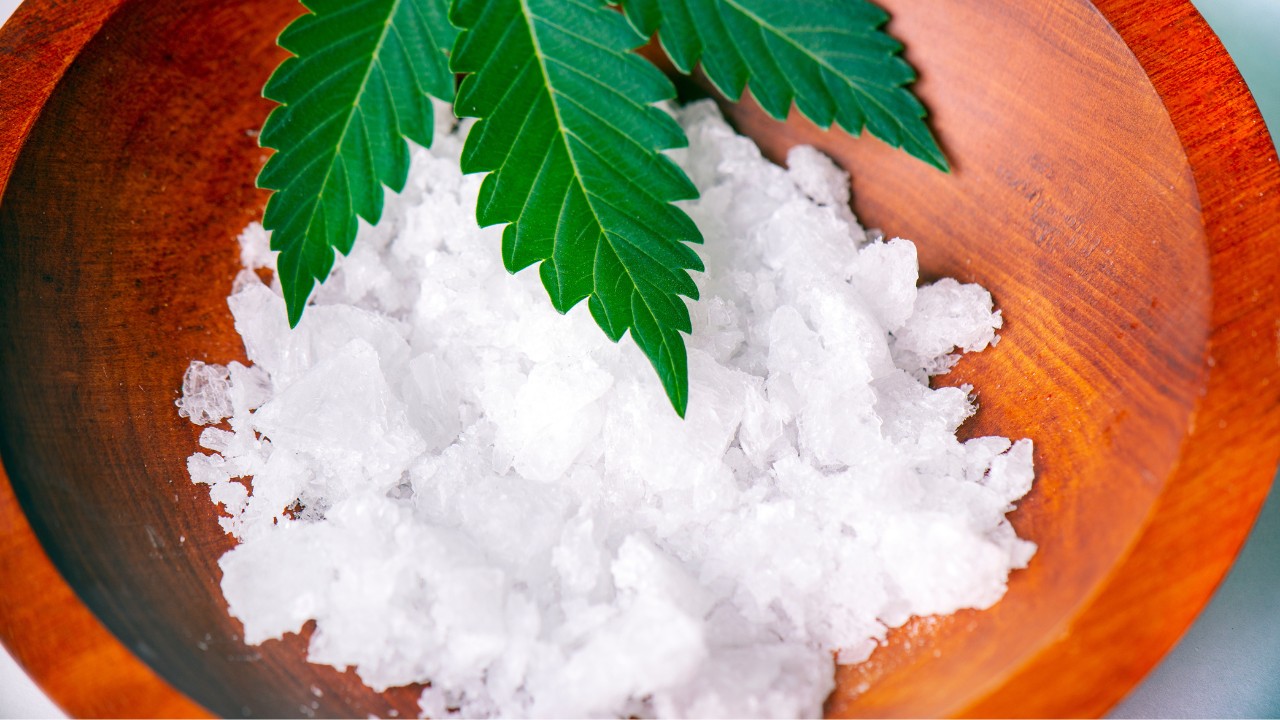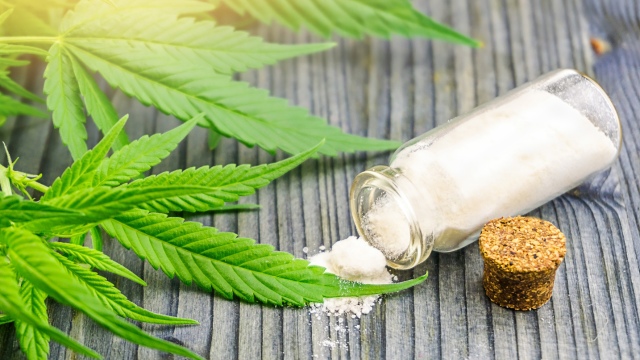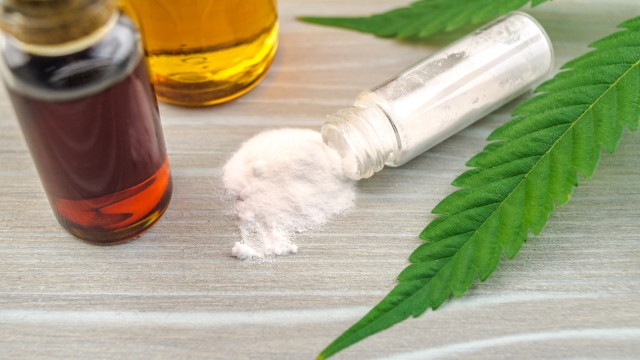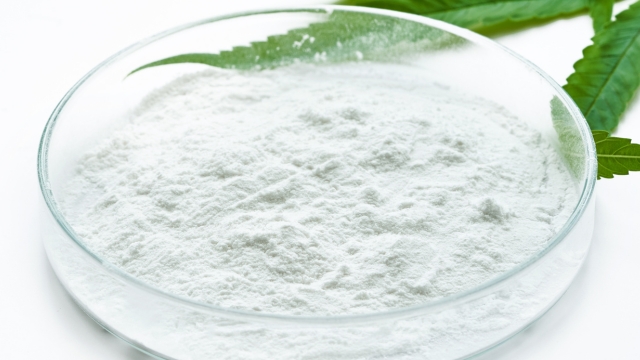CBD isolate has been gaining increasing attention in the health and wellness industry as a versatile and pure form of CBD. As interest in CBD products grows, it’s essential to understand the complex process involved in how to make CBD isolate to ensure quality and safety.
How to Make CBD Isolate
CBD isolate, a white powder with 99% pure CBD, stands as one of the market’s most potent and versatile CBD products. Originating from industrial hemp plants, it lacks psychoactive components, ensuring suitability for CBD isolates oil without mind-altering effects.
Understanding the intricate production process involving extraction, winterization, filtration, and purification is pivotal for ensuring its quality and safety.
Step 1. Selecting High-Quality Hemp
The initial phase of crafting CBD isolate involves selecting the appropriate industrial hemp strain, which is crucial for optimal cannabidiol concentration. Unlike full-spectrum CBD, which includes various hemp compounds, CBD isolate solely contains CBD, which is ideal for therapeutic benefits without other cannabinoids exposure.
Given hemp’s pivotal role, sourcing from reputable suppliers offering superior strains becomes imperative. Securing top-tier materials establishes a strong base for crafting exceptional CBD isolate products.
Step 2. Harvesting and Drying
After selecting the optimum hemp strain, the subsequent phase involves harvesting the plants at their peak CBD concentration, usually six to seven weeks into flowering, ensuring the highest CBD content. Crucial for upholding quality and potency, properly drying and curing harvested materials become imperative.
Consider hanging the plants upside down or laying them on racks in a dark room to facilitate the drying and curing process. Allow a duration of approximately 5 to 15 days for drying while maintaining an optimal temperature range of 60 to 70 degrees Fahrenheit and a humidity level of 60%.
This deliberate, gradual drying process effectively preserves CBD quality, laying the groundwork for successful extraction and isolation.
Step 3. Extracting CBD Oil
Once the harvested hemp plants are dried and cured, the subsequent step involves extracting the CBD oil. Two commonly employed extraction methods for CBD isolate are CO2 extraction and ethanol extraction.
CO2 extraction is a sophisticated process utilizing pressurized and cooled carbon dioxide to separate cannabinoids and terpenes from the hemp flower effectively. It stands out for its solvent-free extraction of cannabis compounds.
Conversely, ethanol extraction offers a direct, secure, and efficient approach to isolate CBD from the entire flower, utilizing premium grain alcohol as a solvent. Many companies favor ethanol extraction due to its familiarity and less complex learning curve compared to CO2 extraction, which demands expensive equipment and expertise.
Regardless of the chosen extraction method, emphasizing efficiency and safety throughout is crucial to yield high-quality CBD oil suitable for further processing into CBD isolate.
Step 4. Winterizing the Extract
Following the extraction of CBD oil from the hemp plant, the subsequent step involves the process of winterizing the extract. This essential process includes mixing the oil with ethanol and subsequently freezing the mixture to eliminate fats, waxes, and lipids, thereby enhancing the purity of the CBD extract.
Winterization holds a pivotal role in the production of high-quality CBD isolate. It prevents the undesired presence of fats, waxes, and chlorophyll, which could otherwise diminish the concentration and quality of the CBD compound.
By subjecting the oil mixture to sub-zero temperatures and filtering the resulting solution, you move closer to attaining a pure and potent CBD isolate.
Step 5. Filtering and Purifying
Upon obtaining the winterized solution, the subsequent phase involves filtering and purifying the extract. This crucial process entails the filtration of the solution to eliminate any remaining impurities and undesired substances. Subsequent to filtration, a rotary evaporator is utilized to eliminate the ethanol, a hydrocarbon solvent, concentrating the extract and guaranteeing its freedom from any residual solvents.
These steps are pivotal in crafting a high-quality CBD isolate, as they aid in the separation of CBD molecules from other plant materials, waxes, and contaminants.
By meticulously eliminating these undesirable components, a more concentrated and pure form of CBD isolate is achieved, ready for subsequent processing.
Step 6. Decarboxylating the Concentrate
Having obtained a purified and concentrated CBD extract, the subsequent pivotal step involves decarboxylating the concentrate. This transformative process eliminates carboxylic acid and CO2 from cannabinoids within the cannabis extract, converting the acidic cannabinoid (CBDa) into its neutral form (CBD). It’s a critical step that enhances the potency of the CBD isolate, ensuring the inclusion of all the diverse advantages the cannabinoid offers.
Decarboxylation typically necessitates heating the concentrate within the temperature range of 220°F (105°C) to 240°F (115°C). Importantly, employing specialized equipment like a decarboxylation oven or a vacuum oven becomes imperative to ensure precise temperature control and achieve optimal results.
Step 7. Distilling the Extract
Following the completion of decarboxylating the CBD concentrate, the subsequent phase involves further refining the extract through distillation. In particular, short path distillation serves this purpose by segregating CBD from terpenes, volatiles, and high boiling point cannabinoids referred to as ‘heads’ and ‘tails.’ This method yields CBD distillate, an exceedingly purified CBD variant.
Furthermore, the meticulous control of the distillation process and the use of suitable equipment are pivotal in guaranteeing that your CBD distillate maintains top quality. This ensures the absence of residual solvents, contaminants, and undesirable compounds, culminating in a final product of pure and potent CBD.
Step 8. Isolating CBD
Having obtained a purified and concentrated CBD extract, the subsequent phase involves isolation. This crucial step encompasses crystallizing the cannabidiol by introducing a solvent like pentane and regulating the temperature to induce crystal formation. Notably, the crystallization process stands as a pivotal element in yielding high-quality CBD isolate, effectively distinguishing cannabidiol molecules from other plant materials and contaminants.
Subsequently, the resulting CBD crystals are subject to separation and washing to ensure purity. By meticulously managing the crystallization process and employing suitable solvents, you can generate a pure and potent CBD isolate prepared for utilization in diverse applications and product formulations.
Step 9. Collecting and Washing Crystals
Upon the formation of CBD crystals, the subsequent phase entails collecting and washing them to guarantee purity. This process of separating and washing the crystals requires employing a cold solvent, such as ethanol, to eliminate any lingering impurities and undesired substances. Thorough washing is imperative in crafting a high-quality isolate devoid of residual solvents or contaminants.
Step 10. Drying the Isolate
Following the washing of the CBD crystals, the subsequent step necessitates drying them to eliminate any remaining solvent residues. This process specifically involves utilizing a vacuum oven to ensure effective evaporation of all solvent residues, ultimately ensuring the resulting CBD isolate is devoid of any impurities.
The drying phase plays a pivotal role in crafting a high-quality CBD isolate, as any lingering solvent residues could adversely affect the purity and potency of the final product.
Step 11. Testing and Quality Control
Ensuring the quality and safety of the CBD isolate is paramount. Thus, rigorous testing and quality control measures must be consistently applied throughout the production process to ensure adherence to necessary standards.
It’s important to note that conducting various tests and analyses is essential to verify the purity, THC content, and overall quality of the CBD isolate.
Step 12. Infusing in Carrier Oil (Optional)
Though CBD isolate can function independently, an alternative method involves incorporating it into a carrier oil to enhance ease of use and application. This optional step involves warming the oil and blending it with the CBD isolate, culminating in a versatile and user-friendly CBD-infused oil.
This infusion process significantly expands the scope of potential applications, facilitating a diverse range of product formulations and uses.
Step 13. Packaging and Storing
To uphold the quality and potency of both the CBD isolate and infused oil, meticulous attention must be paid to their packaging and storage. Hence, ensuring they are stored in airtight containers, shielded from light and heat, is imperative to sustain their freshness and potency over an extended period.
By thoughtfully choosing suitable packaging materials and maintaining proper storage conditions, you can guarantee that your CBD isolate and infused oil retain the utmost quality and potency. This meticulous approach will ensure your customers receive top-tier CBD products, delivering the manifold benefits associated with cannabidiol isolate.
Understanding Legal and Regulatory Aspects
Incorporating awareness of legal considerations and adhering to local and international regulations is imperative in the production and sale of CBD isolate. This encompasses federal legality, state regulations, licensing and permits, quality control and labeling, as well as marketing and advertising restrictions.
By remaining well-informed and strictly adhering to all pertinent laws and regulations, you can guarantee the responsible and lawful conduct of your CBD isolate production and sales. This dedication to compliance safeguards your business while simultaneously contributing to the continuous growth and prosperity of the CBD industry overall.
Also Read: What Is the Best CBD for Erectile Dysfunction: A Comprehensive Guide to Effective Solutions
Advanced Extraction Techniques
With the continuous evolution of the CBD industry, advancements in extraction methods and technologies are continually unfolding to create high-quality CBD isolate. The utilization of advanced extraction techniques and equipment can notably enhance purity and yield, thus elevating the final product’s quality.
Remaining updated about the latest advancements in extraction techniques and integrating new technologies is pivotal. This proactive approach ensures that your CBD isolate production maintains its position at the forefront of innovation.
Such dedication to continuous improvement not only supports the ongoing success of your business but also contributes significantly to the advancement of the CBD industry as a whole.
Purity and Potency Optimization
In order to provide customers with the best product, achieving high purity and potency in CBD isolate is paramount. Hence, implementing strategies and techniques to mitigate contamination and degradation significantly enhances the quality of the final product.
By meticulously selecting appropriate hemp strains, extraction methods, and purification processes, you can ensure that your CBD isolate meets the highest standards of purity and potency. This unwavering commitment to quality will set your business apart in the competitive CBD market, guaranteeing the delivery of premium cannabidiol products to your customers.
Market Trends and Applications
Amidst the burgeoning CBD market, the range and diversity of potential applications and product formulations utilizing CBD isolate are continuously expanding. Notably, current market trends encompass a burgeoning market share of cannabis beverages, a heightened interest in minor cannabinoids like CBG, accelerated growth in medical CBD products, and an escalating demand for broad-spectrum options.
As the demand for these evolving products continues to surge, manufacturers are fervently striving to meet consumer needs. Staying abreast of the latest market trends and exploring novel applications for CBD isolate is pivotal. This proactive approach allows you to innovate and broaden your product range.
This unwavering commitment to innovation is instrumental in ensuring the perpetual success of your business while contributing significantly to the overall growth of the CBD industry.
Also Read: How Much CBD Should I Vape? Your Ultimate Guide to Optimal Dosage
Final Thoughts
As you continue to explore the fascinating world of CBD isolate production, always prioritize quality, safety, and compliance with legal and regulatory requirements. By doing so, you’ll be well-positioned to succeed in the thriving market and provide your customers with the numerous benefits that pure CBD isolate has to offer.
Related Questions
Still have questions? Check out a couple of common ones below.
Is CBD oil the same as CBD isolate?
CBD isolate is a pure form of CBD, which does not contain other cannabinoids, terpenes, or fatty acids. It’s usually sold as a crystal or powder, but some companies also offer it in oil form. Therefore, CBD oil and CBD isolate are not the same.
What is the optimal temperature for drying and curing hemp plants for CBD extraction?
The optimal temperature for drying and curing hemp plants to facilitate CBD extraction is approximately 60-70°F with a humidity level of 60%.






